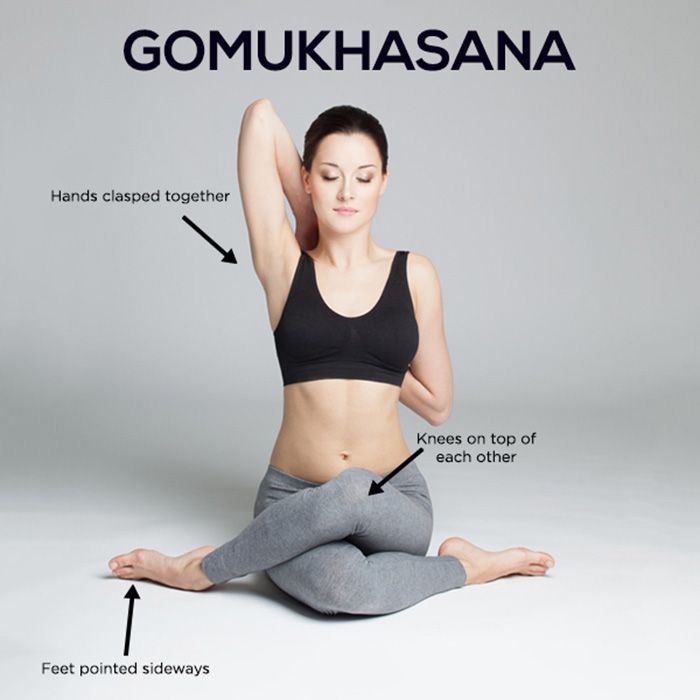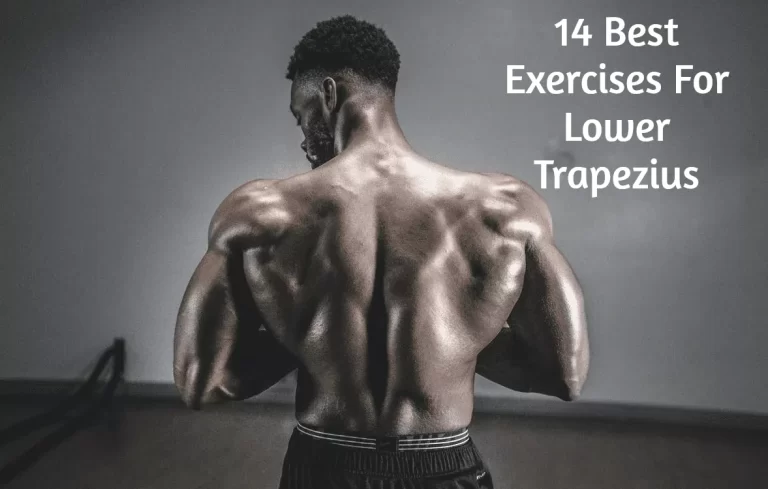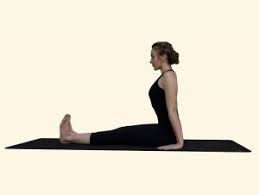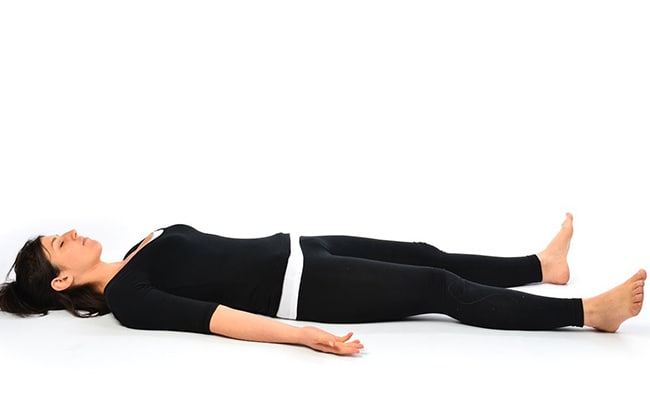22 Types Of Yoga
Table of Contents
Introduction
- Yoga is a spiritual practice grounded in a very delicate science that focuses on achieving body-mind harmony.
- Living a healthy and sound life is both a science and an art.
- The word yoga is derived from the Sanskrit word Yuj, which implies “to unite, join, or combine.”
- Since ancient times, yoga and Ayurveda have grown alongside one another and share a tight historical relationship.
- The practice of yoga, according to religious teachings on yoga, encourages the unification of one’s consciousness with the awareness of the universe, demonstrating the perfect harmony between the mind and body and between man and nature.
- It is said that yoga balances the vata, pitta, and kapha doshas.
- As contemporary scientists have demonstrated, everything in the cosmos is the outward manifestation of a comparable quantum environment.
- A person who has reached a level of liberation known as Mukti, Nirvana, or Moksha is considered to be practicing yoga and is referred to as a yogi.
- Consequently, the main goal of yoga is self-realization, or the ability to transcend all forms of suffering to reach “the state of salvation” (Moksha) or “freedom” (Kaivalya).
- The main goals of yoga practice are health, peace, and living freely in all spheres of life.
- “Yoga” also refers to an internal science that encompasses a variety of techniques that help individuals comprehend this unity and gain control over their destiny.
- As an “Immortal cultural outcome” of the Indus Saraswati Valley civilization, which dates back to 2700 B.C., yoga has established itself by taking into consideration the advancement of humanity’s material and spiritual well-being.
- The fundamental humanitarian principles constitute the essence of Yoga Sadhana.
- Numerous devotees of yoga swear by it, making it one of the most well-liked physical disciplines in the world.
- With consistent practice, you may perhaps increase your strength, flexibility, and balance the benefits of yoga are well-established.
- Moreover, yoga relieves tension, calms the mind, and promotes relaxation.
- There are several varieties of yoga available.
- However, it may become a bit confusing if you’re unfamiliar with it and don’t know your Kundalini from your Iyengar! The objective is to choose a style that best suits your current fitness level and personality.
- Knowing what you hope to gain from your practice can also help you choose the yoga style that is most appropriate for you.
What is yoga?
- Yoga is an age-old discipline that calls for physical postures, focus, and deep breathing.
- Regular yoga practice can enhance your strength, flexibility, tranquility, endurance, and overall well-being.
- Nowadays, yoga is a well-liked kind of physical activity worldwide.
- A 2017 nationwide poll conducted by revealed that 1 in 7 American people had done yoga in the previous 12 months.
How is yoga practiced?
- Yoga is a kind of physical and mental training that may improve strength and flexibility.
- It could also aid in stress relief and pain management.
- Different forms of yoga use meditation, breathing exercises, and physical postures.
- Yoga is an ancient art form that may have originated in India.
- To support both physical and mental well-being, it incorporates breathing exercises, movement, and meditation.
- There are several variations of yoga as well as numerous subdisciplines.
- This page examines the many branches of yoga as well as its history, philosophy, and health and wellness benefits.
History
- The ancient manuscripts known as the Rig Veda include the earliest recorded occurrence of the word “yoga.”
- The Sanskrit word “yuj,” which means “to join” or “union,” is where the word yoga originates.
- The practice of yoga originated more than 5,000 years ago in northern India.
- Indian monks brought yoga to the West in the late 1890s.
- By the 1970s, modern yoga teachings had gained widespread acceptance in Western nations.
Philosophy
- The integration of the mind, body, and spirit is central to the yoga philosophy.
- The yoga branch has six branches.
- Every branch stands for a distinct emphasis and collection of traits.
- The following six branches are:
- Hatha yoga: Priming the body and mind is the goal of this field of the physical and mental sciences.
- Raja yoga: This type of yoga practices meditation and rigorous devotion to a set of rules called the eight limbs of yoga.
- Karma yoga: This road of service aims to build a future devoid of negativity and self-centeredness.
- Bhakti yoga: This seeks to create a devotional path, a constructive outlet for feelings, and a breeding ground for tolerance and acceptance.
- Jnana yoga: This line of yoga focuses on knowledge, the scholar’s path, and intellectual growth via study.
- Tantra yoga: This is the path of ceremony, ritual, or relationship culmination.
Chakras
- The word “chakra” means “spinning wheel.”
- According to yoga, the body’s energy, thoughts, feelings, and energy centers are all located in the chakras.
- Yoga instructors say that people’s emotional reactions, desires, aversions, levels of confidence and fear, as well as physical symptoms and results, are all governed by their chakras.
- When energy in a chakra is blocked, it can lead to physical, mental, or emotional imbalances such as anxiety, lethargy, and poor digestion.
- Asanas are the many physical poses used in Hatha yoga.
- Yoga practitioners perform asanas to release energy and open an imbalanced chakra.
- Each of the seven primary chakras has a distinct focus.
- Sahasrara: Situated at the top of the head, the crown chakra represents a spiritual link.
- Ajna: The third eye chakra, which is situated between the eyebrows, is related to intuition.
- Vishuddha: Immunity and voice communication are linked to the throat chakra.
- Anahata: The heart chakra, located in the middle of the chest, has an impact on both intimate and professional interactions. Unbalances in this chakra will impact tissue, organ, hormone, and oxygen regulation.
- Manipura: The stomach region is home to the solar plexus chakra. It is associated with knowledge, self-control, and confidence in oneself.
- Svadhishthana: Beneath the belly button, the sacral chakra links pleasure, health, and energy.
- Muladhara: To keep a person grounded, the root chakra, located at the base of the spine, links the body and mind to the soil.
- It regulates both the parasympathetic nervous system and the sciatic nerves.
Types Of Yoga
- The primary objectives of contemporary yoga include breathing, strength, flexibility, and exercise.
- It can enhance one’s physical and emotional well-being.
- There are several yoga styles.
- A person’s style selection should be based on their goals and degree of fitness.
- Some yoga forms and styles are as follows:
Vinyasa Yoga
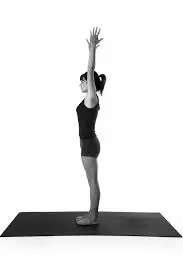
- “To place especially” is what vinyasa, the yoga pose, implies.
- Some people consider vinyasa yoga, which developed from Ashtanga yoga in the 1980s, to be the sportiest kind of yoga.
- “Vinyasa flows” can also refer to a wide range of yoga styles, including prana, power yoga, and Ashtanga.
Steps To Follow;
- Vinyasa lessons teach you to flow from one posture to the next by coordinating your movements with your breath. Depending on the teacher, vinyasa methods can change and incorporate a variety of positions in various orders. In addition to choreographing fresh flows and teaching an alignment-based form of vinyasa, I also prefer to hold some postures for a little while longer after warming up. Here are some more details on the advantages and particular vinyasa postures.
Hatha Yoga

- The word “hatha” (Sanskrit) refers to all of the physical asanas in yoga.
- When it comes to yoga forms that are based on physical practice, such as Ashtanga, Iyengar, and others, all of them are simply referred to as hatha yoga in the West.
- But apart from the physical practice of yoga, there are other branches of the art including kriya, raja, and karma yoga.
- The most common type of yoga is physical-based, although there are many variations.
- This umbrella phrase refers to all forms of yoga that instruct physical postures.
- In general, hatha classes provide a gentle introduction to the basic yoga poses.
Steps To Follow;
- Since poetry yoga courses typically have a slower tempo than other kinds, they are ideal for beginners. These days, hatha lessons are a traditional method of breathing and exercise. Hatha yoga is a fantastic way to start practicing yoga if you have never done it before.
Iyengar Yoga
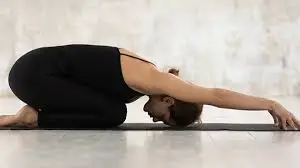
- B.K.S. Iyengar invented Iyengar yoga, which emphasizes alignment in addition to precise and detailed movements.
- Students manage their breath while executing a range of poses in an Iyengar lesson.
- This style of yoga focuses on using a variety of props, including chairs, bolsters, blankets, blocks, and straps, to assist practitioners in establishing the proper alignment in each posture.
Steps To Follow;
- Stance details are adjusted over extended periods as the stance is held.
- Iyengar mostly uses props to assist students in perfecting their form and safely progressing into more advanced positions.
- You won’t leap around, but after an Iyengar session, you’ll feel very open and relaxed and you’ll surely get a workout.
- For those who need to work carefully and slowly due to injuries, this strategy works exceptionally well.
Kundalini Yoga

- The practice of Kundalini yoga is as much physical as it is spiritual.
- The main goal of this method is to release the kundalini energy that is said to be coiled or locked in the lower spine.
- Pent-up energy is released through the meditation method of Kundalini yoga.
- Chanting usually opens a Kundalini yoga class, while singing closes it.
- It includes amongst it asana, pranayama, and meditation aimed at achieving a certain result.
Steps To Follow;
- With its fast-paced, energetic postures and breath exercises, kundalini classes will truly work your breath and core.
- These are very rigorous lessons that may include mantras, chanting, and meditation.
- See our Kundalini yoga explanation to find out more about this particular technique.
Ashtanga Yoga

- The meaning of ashtanga in Sanskrit is “Eight Limb Path.”
- People get together to practice this style of yoga in groups at their speed in Mysore, India; if you see Mysore-led Ashtanga, you’re supposed to be familiar with the series.
- Ashtanga is the source of vinyasa yoga, which is a fluid form that connects breath and movement.
- Check out our Ashtanga yoga beginner’s guide to find out more about this particular style of yoga.
- The ancient yoga principles are applied in this kind of practice.
- Still, it did become more and more fashionable in the 1970s.
- Ashtanga uses the same postures and flow patterns that quickly connect each stance to the breath.
Steps To Follow;
- Ashtanga yoga is not for the novice as it contains a highly physically demanding series of poses.
- It needs a seasoned yogi to enjoy it truly.
- Ashtanga begins with five Sun Salutations A and B, and then proceeds into a sequence of floor and standing poses.
Bikram Yoga

- Inspired by Bikram Choudhury, Bikram yoga is a series of predetermined positions performed in an environment that resembles a sauna, usually with a temperature of 105 degrees and 40% humidity.
- After being sued for harassment and sexual assault in the United States, Choudhury left for Mexico in 2017.
- In an attempt to distance themselves from the originator, several studios that were once affiliated with Bikram now teach hot yoga.
- This series consists of 26 postures with two breathing exercises.
Steps To Follow;
- Each of the 26 fundamental postures in the sequence performed twice is executed in the same way every time.
- The focus of many of these postures is on good alignment.
- If you want to practice yoga in a more heated environment, seek out studios that provide hot yoga sessions.
Yin Yoga

- Yin yoga is a sedentary form of yoga that emphasizes holding poses for extended periods.
- Yin yoga may also be a contemplative kind of meditation that promotes inner tranquility.
- In yin yoga, holding still for long periods is the major focus.
- This style of yoga targets the ligaments, joints, bones, fascia, and deep tissues.
Steps To Follow;
- Since postures may be held for anywhere from 45 seconds to two minutes, yin is an excellent lesson for beginners.
- Because you’re expected to let gravity do the majority of the work, the lessons are laid back.
- Check out our comprehensive guide on all things yin yoga, available here.
Restorative Yoga

- The main goals of restorative yoga include mental relaxation and slowing down after a demanding day.
- This method is essentially about unwinding physically.
- Additionally, restorative yoga aids in mental liberation and cleansing.
- This is a calming yoga technique.
- During a restorative yoga session, an individual does four or five basic poses, utilizing props like blankets and bolsters to help them fall into deep relaxation without having to work to hold the position.
Steps To Follow;
- In a restorative yoga session, you will practice fewer poses for longer periods.
- Numerous postures have been altered to make them simpler and more calming.
- Similar to Iyengar, a lot of carefully positioned props are utilized, including eye cushions, bolsters, and blankets. The purpose of all the props is to encourage deeper and deeper relaxation.
Prenatal Yoga

- Prenatal yoga is designed specifically for expectant mothers and is appropriate for practitioners in any trimester.
- Prenatal exercise has been hailed by many as one of the finest for pregnant mothers due to its emphasis on breathing, strengthening the pelvic floor, and fostering a link with the developing child.
- Additionally, prenatal yoga aids moms in getting ready for childbirth.
- Prenatal yoga incorporates postures that have been specifically designed with expectant mothers in mind.
- This kind of yoga can help people stay healthy throughout pregnancy and help them get back into shape after giving birth.
Steps To Follow;
- You will utilize props to adjust your postures and maintain stability during this exercise; stability is far more important in this session than flexibility.
Anusara Yoga

- Anusara is a contemporary hatha yoga style that emphasizes alignment and is most comparable to vinyasa in that regard, but it places stronger stress on the mind-body-heart connection.
- John Friend established it and developed a special framework, the Universal Principles of Alignment.
- Following allegations of financial mismanagement and sexual misbehavior, he resigned in 2012.
- Since then, Friend has collaborated to teach the Bowspring technique alongside Desi and Micah Springer.
Steps To Follow;
- Anusara is renowned for emphasizing heart opening and emphasizes on spirals and proper movement of every body component.
- As soon as the teacher breaks a stance, expect the class to stop and assemble around a single pupil.
Jivamukti Yoga

- In 1984, David Life and Sharon Ganon developed Jivamukti. Vinyasa-flow lessons combined with Hindu spiritual teachings make up the majority of Jivamukti classes.
- Since the primary focus of this approach is on one’s connection to the Earth as a living entity, the majority of Jivamukti adherents adopt a vegetarian diet.
Steps To Follow;
- Classes often begin with a series of chants, then move into a sequence of positions that correspond with the five tenets of Jivamukti yoga and philosophy.
Kripalu Yoga
- Practitioners of this kind learn to understand, accept, and draw lessons from their bodies.
- By going inside, a Kripalu yoga student discovers their level of practice.
- Breathing exercises and mild stretches commonly open the lessons.
- Individual postures are then practiced, culminating in a final relaxation.
Power Yoga
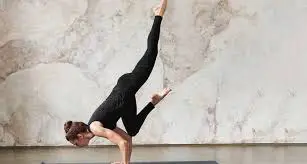
- Power yoga is a great option if you’re looking for a type of yoga that makes your heart race.
- Ensuring that cardio is at the center of this kind of yoga means that it will get you moving.
- In the late 1980s, practitioners developed this athletic and dynamic form of yoga based on the traditional Ashtanga approach.
Aerial Yoga

- Aerial yoga can be the ideal activity for you if you enjoy acrobatics and gymnastics performance.
- This type of yoga makes use of hammocks or yoga swings to help students who find it difficult to do poses like backbends.
- Ballet, acrobatic gymnastics, and certain Pilates exercises inspire numerous of its poses.
AcroYoga

- Acro yoga is similar to aerial yoga, except it doesn’t use yoga swings or hammocks.
- Rather, this kind of yoga emphasizes the factors of trust involved in doing acrobatics with a partner or in a group.
- Participants will select one of the following three roles: spotter, flyer, or base.
Yang Yoga

- This yoga is the antithesis of yang, emphasizing bodily involvement and warmth.
- This yoga strengthens and improves blood circulation in the muscles.
- Breathing techniques are used in this kind of yoga to enhance the poses and facilitate the activation and appropriate release of energy.
Buti Yoga

- To operate on a spiritual level, Buti Yoga involves exercising and opening our chakras, or inner energy.
- This kind of yoga combines deep core workouts with cardio, drawing influence from tribal dancing techniques.
- This kind of class follows sequences similar to those in a vinyasa class but at a quicker speed.
Tantra Yoga

- Contrary to popular belief, tantra yoga is more.
- Its practices are intertwined with many different teachings, and doing this style of yoga can assist people in connecting with their inner selves.
- If done with a partner, this yoga may help practitioners develop a greater sense of self-awareness and improve their relationships.
- Tantra means “to weave or expand.”
- Tantra yoga, then, combines various yoga techniques with various spiritual teachings and styles to create a way of connecting with the cosmos and other people.
- Tantra yoga may help you achieve your objectives, become more in tune with who you are, and, when done with a partner, strengthen your relationship when practiced regularly.
Karma Yoga
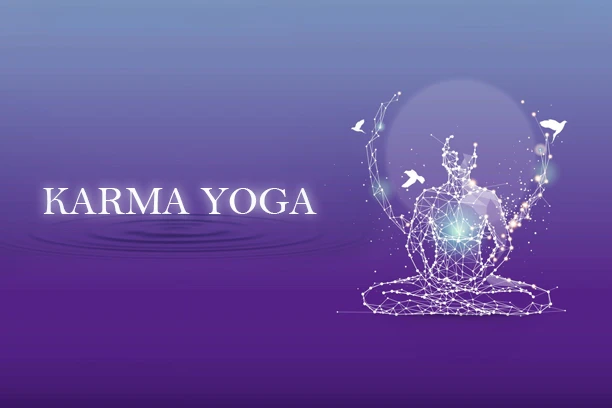
- In Sanskrit, karma means activity or doing.
- Many karma yoga practitioners understand that this style of yoga may help them forge a stronger spiritual bond.
- Karma yoga’s concept, or its goal, is that individuals who practice it find fulfillment while relieving their body and mind and ultimately leading to a satisfied existence.
Sivananda Yoga
- This approach is based on a five-point paradigm.
- According to this idea, leading a healthy yogic lifestyle may be achieved by appropriate breathing, relaxation, food, exercise, and positive thought.
- The twelve fundamental asanas practiced by Sivananda practitioners begin with Sun Salutations and conclude with Savasana.
ViniYoga
- The primary focus of viniyoga is on form over function, breath, and adaptation, holding and repeating, and the art and science of sequencing.
Prenatal Yoga

- Prenatal yoga is designed specifically for expectant mothers and is appropriate for practitioners in any trimester.
- Prenatal exercise has been hailed by many as one of the finest for pregnant mothers due to its emphasis on breathing, strengthening the pelvic floor, and fostering a link with the developing child.
- Additionally, prenatal yoga aids moms in getting ready for childbirth.
- Prenatal yoga incorporates postures that have been specifically designed with expectant mothers in mind.
- This kind of yoga can help people stay healthy throughout pregnancy and help them get back into shape after giving birth
Benefits of Yoga
- A 2012 study found that 94% of adult yoga practitioners do so for health-related purposes.
- Yoga offers several psychological and physical advantages, including:
- Building muscle strength
- Enhancing flexibility
- Promoting better breathing
- Supporting heart health
- Helping with treatment for addiction
- Improving sleep
- Enhancing overall well-being and quality of life
- It is best to speak with a doctor before beginning a yoga practice, if at all feasible.
Risks and side effects
- Many forms of yoga are safe for anyone to practice when led by a qualified instructor since they are generally gentle.
- It is uncommon for practicing yoga to result in a significant injury.
- Injuries that occur most frequently to yoga practitioners include sprains and strains.
- Nonetheless, before beginning a yoga practice, people would want to take into account a few risk factors Source.
- It is advisable for someone who is pregnant or suffers from a chronic illness like sciatica, glaucoma, or bone loss to speak with a healthcare provider before beginning yoga.
- Depending on their particular health, some persons might need to modify or avoid some yoga positions that could be dangerous.
- Advanced positions and challenging methods, such as headstands, lotus poses, and forceful breathing, are not recommended for beginners.
- People should not substitute yoga for traditional medical care while treating an illness, nor should they put off visiting a healthcare provider for treatment of pain or any other medical issue.
Conclusion:
Yoga is an age-old discipline that has evolved. The main focus of modern yoga is on positions that energize the body and promote inner serenity. In the past, fitness was not as significant as yoga. Instead, the focus was on enhancing spiritual energy and mental clarity. There are several types of yoga available. The style a person chooses will depend on their objectives and level of physical dexterity. When practicing yoga, those with certain medical conditions, like sciatica, should move slowly and carefully. Yoga may assist in an active, well-balanced lifestyle.
FAQ:
Yoga has a plethora of advantages, some of which vary according to the style. But generally speaking, yoga promotes balance, strength, mobility, flexibility, attention, and general health. Studies reveal that frequent yoga practitioners have a variety of health advantages, including lowered blood pressure and lowered stress levels.
You will naturally observe greater physical benefits in a more rigorous lesson. Even the most restorative, calming lessons, though, will leave you feeling at ease, light, and renewed.
Every yoga style has elements that certain students will find difficult and others that they won’t. For instance, while a yin class might not be as physically taxing, you will need to remain still and silent for prolonged periods, which can be difficult in and of itself. Furthermore, you decide how hard you push yourself in a class; therefore, if you’re taking it gently, even a physically demanding class might seem “easier.”
Meditating and doing yoga “asanas” (also known as postures) are aspects of the broader yogic lifestyle, which is much more than just physical practice. Asanas were created to promote meditation by encouraging the mental toughness and flexibility needed to sit for extended periods.
One may consider yoga to be a form of embodied or moving meditation, as it is inherently contemplative. Meditation may also be done at the start or finish of certain yoga courses.
There is danger associated with any physical activity, especially if you are ill or recuperating from an accident. Still, yoga is far gentler on the body than high-impact workouts, and postures can be adjusted to accommodate varying degrees of experience. If in doubt, discuss your worries with your physician. Additionally, inform your yoga instructor of any injuries you may be experiencing.
The originator of modern yoga is regarded as Patanjali. He penned the Yoga Sutras, which describe the many beliefs and methods that are categorized under the traditional Yogic Sciences. In many regions of India, Tirumalai Krishnamacharya is regarded as the founder of modern yoga.
References:
- Nichols, H. (2023, April 26). How does yoga work? https://www.medicalnewstoday.com/articles/286745#risks-and-side-effects
- 11 Types Of Yoga: A Breakdown Of The Major Styles. (2022, November 21). Mindbodygreen. https://www.mindbodygreen.com/articles/the-11-major-types-of-yoga-explained-simply
- Howard, L. (2021, March 31). 20 Different Types of Yoga: How to Find the Right Style for You – YOGA PRACTICE. YOGA PRACTICE. https://yogapractice.com/yoga/types-of-yoga/
- The Best Yoga Class Comes with Puppies | Puppy Yoga and Bubbly. (2022, October 14). Doggos.ca. https://doggos.ca/blogs/pet-lifestyle/benefits-of-puppy-yoga#:~:text=Puppy%20yoga%2C%20also%20called%20’doga,with%20participants%20during%20your%20class.


